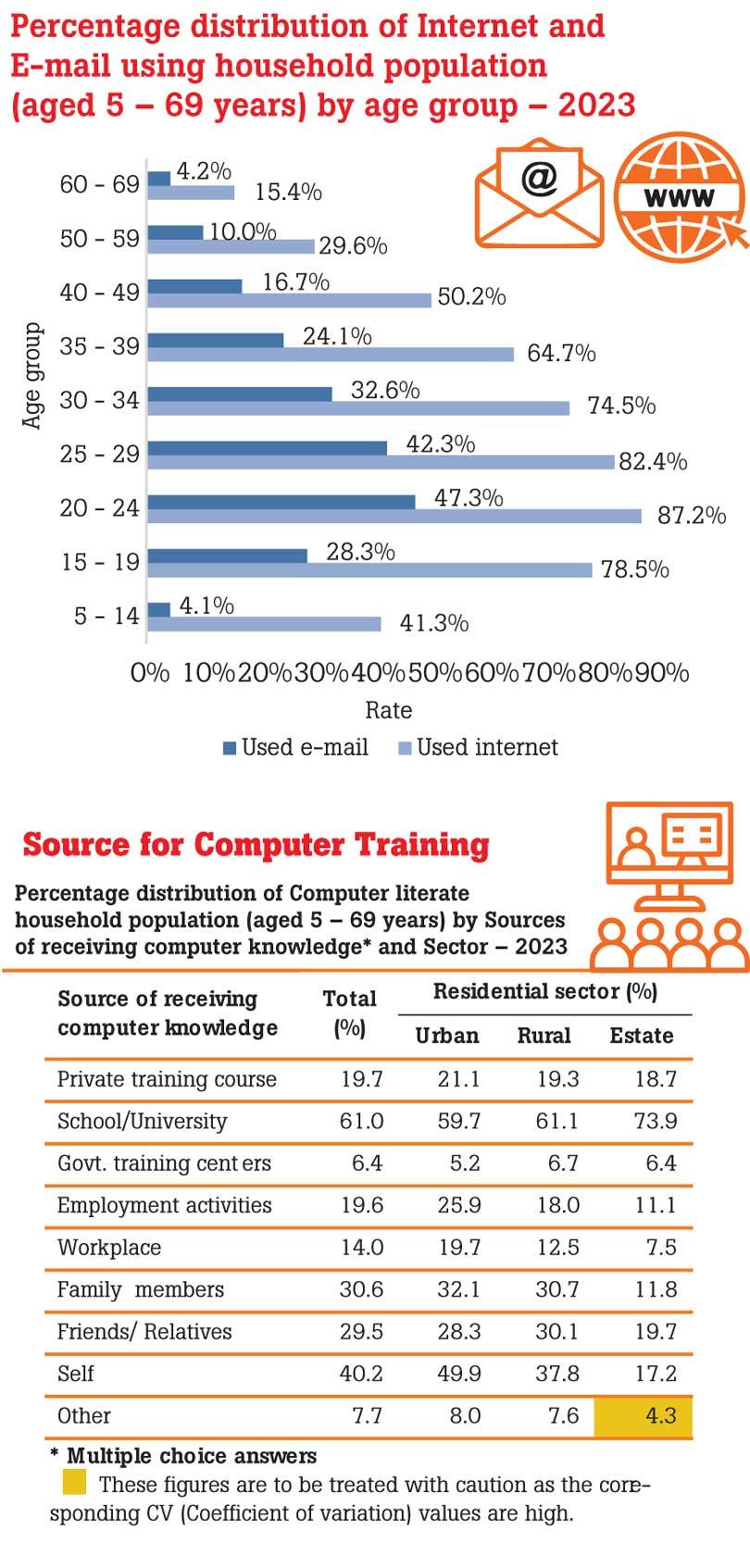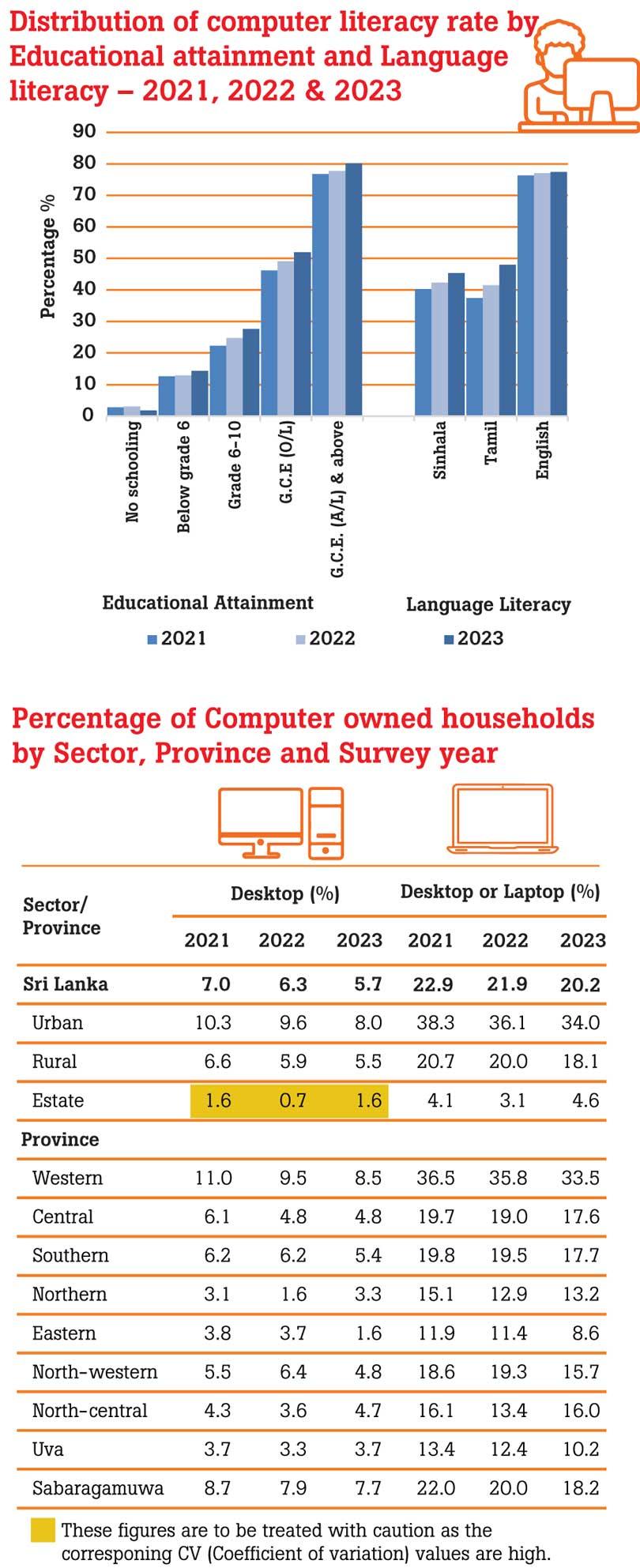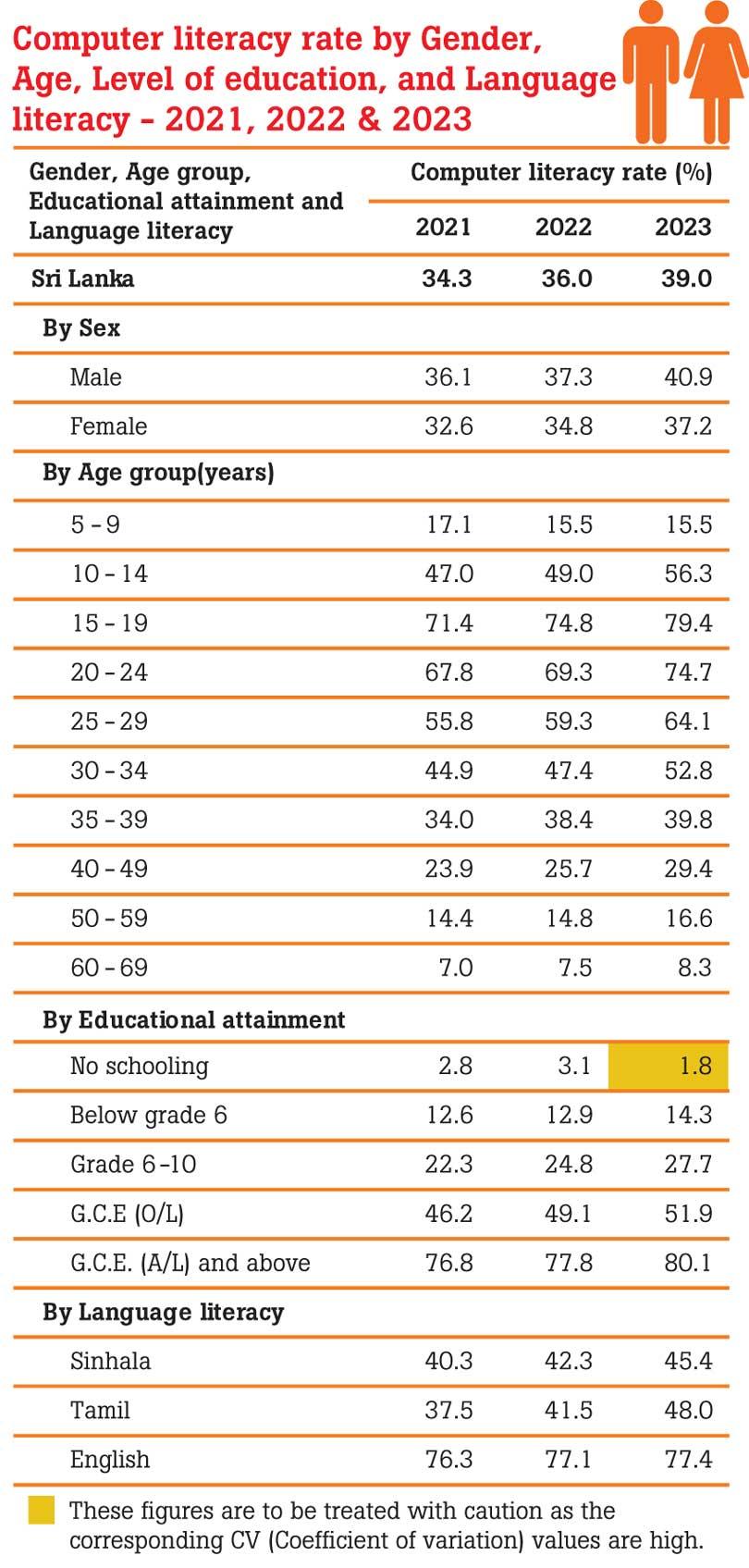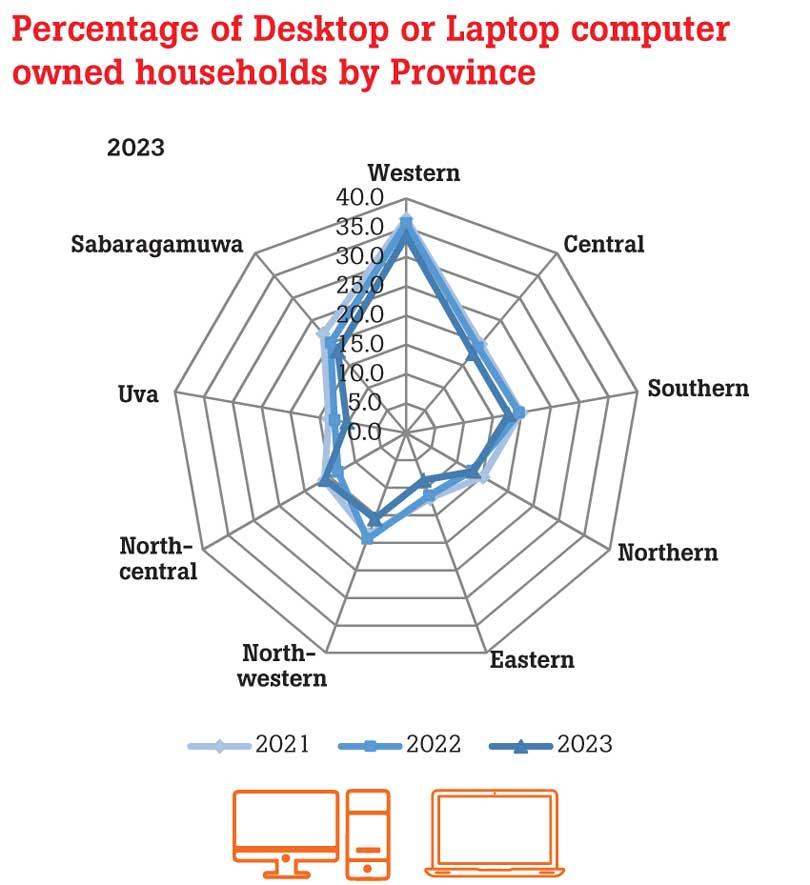12 Jun 2024 - {{hitsCtrl.values.hits}}

By Chaturanga Pradeep Samarawickrama
The percentage of the computer literate population in Sri Lanka has been gradually increasing over the recent years. However, the digital divide still exists.
A survey conducted by the Census and Statistics Department from January to December in 2023, taking into account a nationally distributed sample of 25,750 households and persons of aged five to 69 years, reveals that the country’s computer literacy and digital literacy rates stand at 39.0 percent and 63.5 percent, respectively.
The 2023 rate marks an increase of 4.7 percentage points from 2021 to 2023.
The computer literacy rate is the proportion of the computer literate population, expressed as a percentage of the total population within the respective domain.
A person, aged between five and 69 years and capable of using a computer independently, is considered computer literate. This includes even a five-year-old who can play a computer game.
A person (aged five to 69) is considered as a digital literate person if he/she could use a computer, laptop, tablet or smartphone on his/her own.
The urban sector, demonstrating higher literacy in both computer and digital skills, records 20.2 percent of households owning either a desktop or laptop computer.
Looking at the household computer ownership, the survey findings showed that at least one computer was available in 20.2 percent of households in the country, meaning one out of every five households owned either a desktop or a laptop. In the urban sector, this percentage is 34.0 percent, while the rural and estate sectors show 18.1 percent and 4.6 percent, respectively.
When considering the provinces, the highest availability of computers is in the Western province, at 33.5 percent, while the lowest is in the Eastern province, at 8.6 percent.
The percentage of households with a desktop or laptop computer varied between 20 percent and 23 percent from 2021 to 2023.
In 2023, the urban sector had the highest computer literacy rate, at 52.9 percent, while the rates for rural and estate sectors were 37.1 percent and 17.9 percent, respectively.
Among the provinces, the Western province reported the highest computer literacy, at 49.9 percent, while the Uva province had the lowest, at 26.5 percent.
Males had a higher computer literacy rate (40.9 percent) compared to females (37.2 percent) in 2023.
The highest computer literacy rate was among the youth aged 15-19 years, at 79.4 percent.
Additionally, the survey revealed that computer literacy increased with the level of education, with those having GCE Advanced Level or above education showing a rate of 80.1 percent.
Computer literacy was also higher among those literate in English, at 77.4 percent.
Among the employed population in Sri Lanka, the computer literacy was around 72.4 percent in 2023.
Higher computer literacy rates were among the senior officials and managers (90.9 percent), professionals (96.0 percent), technicians and associate professionals (94.0 percent), clerks and clerical support workers (94.1 percent).
Even among the individuals engaged in elementary occupations, 39.0 percent were computer literate in 2023.
In 2023, a total of 63.5 percent of the population aged five to 69 years demonstrating digital literacy, which is higher than the computer literacy across all levels, is a reflection of a shift from personal computers to smartphones and tablets. Individuals accounting to 51.2 percent in this age group used internet at least once during the past 12 months.
The survey also shows that the urban sector, with more available facilities, had the highest usage of both email and internet, compared to the rural and estate sectors.
Data indicates that individuals aged 20-24 had higher internet and email usage than the other age groups.
Furthermore, 18.6 percent of the household population aged five to 69 years used email at least once in the past year.



23 Dec 2024 1 hours ago
23 Dec 2024 1 hours ago
23 Dec 2024 2 hours ago
23 Dec 2024 3 hours ago
23 Dec 2024 4 hours ago